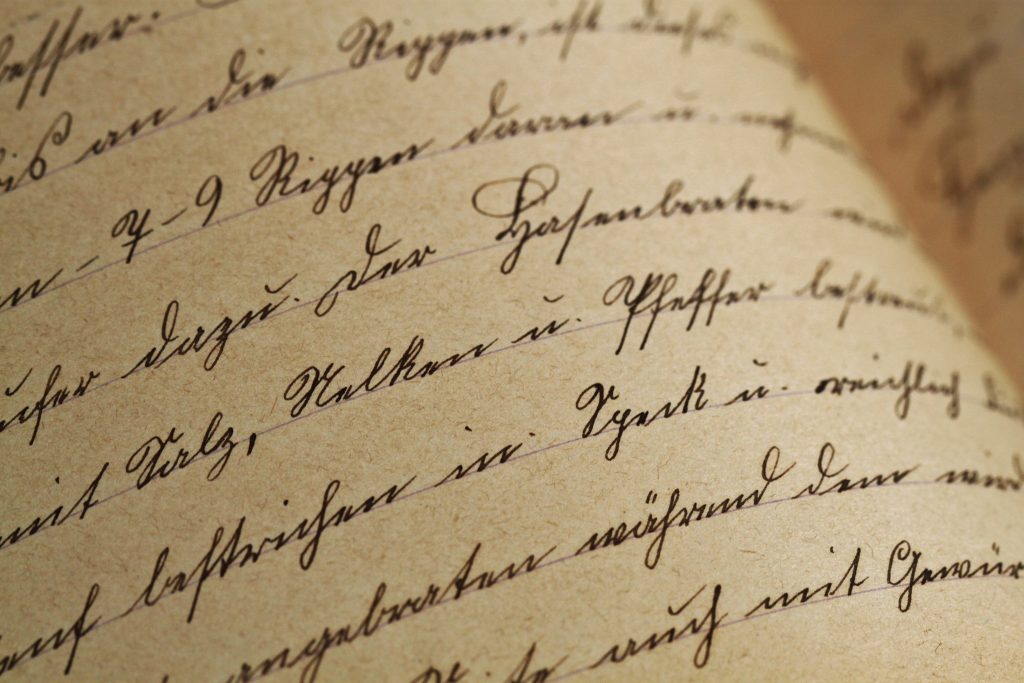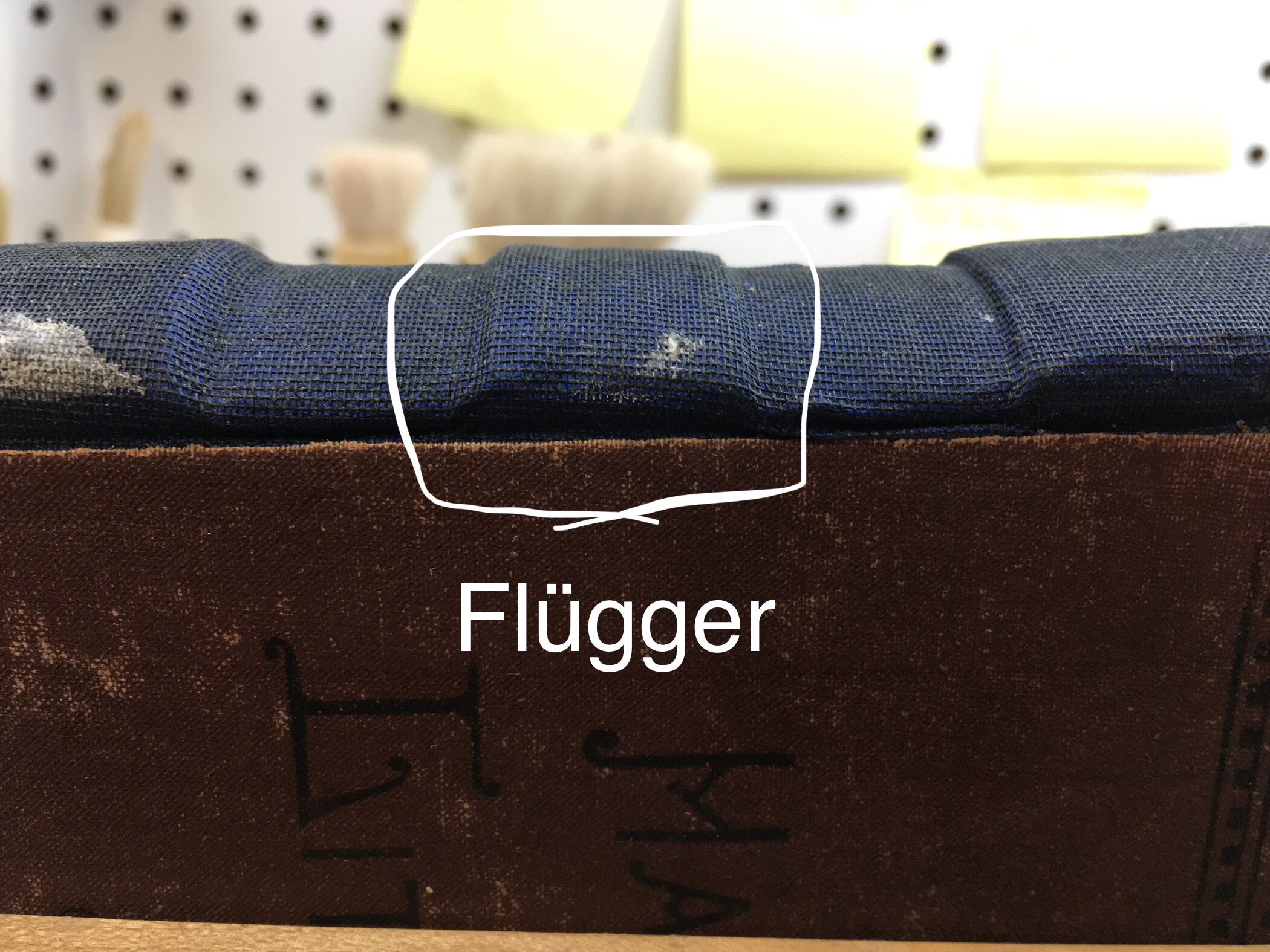Written by Claudia Swain
We all have a box of books, documents, photographs, maps – Great Aunt Susan or your mom told you to take them and keep them safe and so you did; but you’ve noticed lately the pages are curling, the photographs are yellowing, and the binding is falling apart! Should you get them restored? Obviously we think so, but just in case you need a little inspiration to take that last step, here are the top five reasons you should have your papers and books preserved in 2020.
5. Marie Kondo would be proud of you
Everyone’s favorite tidying-up guru tells us to transform our lives by “choosing joy” by de-cluttering our space and transforming our lives. She dedicates two entire steps to paper and sentimental items- so what do you do with your papers that are deeply sentimental? That family bible in the back of your closet from 1900, the immigration papers of your great-great uncle coming through Ellis Island, Gramps’ love letters to Grandma from during the war – they’ve been sitting in the back of your closet, the bottom drawer of your desk, or somewhere upstate in a non-climate controlled storage unit.
You’ve already decided these items spark joy in your life (and if you haven’t yet, keep reading!) but the next step is preserving and digitizing them. Make sure these items will last a lifetime and will be able to be enjoyed by your children- speaking of which…

4. Your kids need the connection
Scientists have documented what many of us already knew in our hearts: learning about family history benefits children. A big part of growing up is finding our place in the world and learning where we fit in; engaging directly with the relics of our past can really help anchor an adolescent’s identity and help develop a strong sense of place. Kids are shown to have higher self-esteem when they can see themselves as the latest link in a long and storied chain, and there’s no better way to teach them then by allowing them to touch and handle our most precious papers. Grandmother’s high school year book (she was on the swim team! In 1947!!) can be a source of inspiration for even the most difficult teenager after you get it restored.
3. You watch a lot of Antiques Roadshow
Look, we’ve all been there. The student loans pile up; the mortgage is due; you need a little extra cash. Maybe you’ve made it this far and the sentimental reasons weren’t adding up – or paying the grocery bills – and that’s okay! The secret desire that something in the attic is worth a bundle of money is universal. And it’s technically possible but you’ll never know unless you get it restored and appraised!
We admit this is a very long-shot, but dream for a few moments about these real-life examples of striking it rich: this Declaration of Independence was found in a cardboard box outside of Houston and sold for seven figures, another Declaration of Independence was found in a $4 frame in Pennsylvania and sold at auction for one million, a 1774 newspaper was found in a New Jersey Goodwill worth as much as $18,000, and even a 16th century map of America (one of five in the world!) was discovered in Germany stuck between the pages of a book.
2. To learn the hot gossip on your ancestors
Now that we’ve had our dreams, let’s talk about what we wanted to know the whole time- what our ancestors were REALLY getting up to. Now that DNA kits are all the rage, skeletons are letting themselves out of the closet and dancing around the family den. But if you have concerns about giving your genetic material to a private company (and who doesn’t) then finally taking care of your deteriorating family documents is the best move for 2020.

Take my own family’s example. My great-great grandfather William Jesse Wheldon is the only family member to have his death recorded twice in the family bible – due to a miscommunication involving a literal shot through the heart, the Civil War, and tragically spotty postal service, I might never have discovered the story if not for those two lines in the old family tome! Click HERE to read more about our work preserving a similar family bible and see how these precious relics can be preserved for enjoyment for years to come.
1. Because we are what we leave behind
Let’s face it, our days on this earth are numbered. Our descendants will only have the treasures and documents we leave behind, which is how we ended up with these letters, maps, and photo albums in the first place, right? Someone in our past believed that they were worth passing on, and here we are with this legacy. It’s our responsibility to shepherd that legacy to the next generation.
This year is the best time to think about preserving your heirlooms; digital technology has revolutionized how we repair and store relics. Documents even 300 years old can be reconstructed from fragments and stabilized; photographs can be enhanced and optimized with technology for better viewing and sharing; whole collections can be digitized and shared with every member of a far-flung family. Start the new year off right by delving into your own family history and making sure your memories can last to be enjoyed by future descendants decades in the future.
The results are in! (Well, at least the preliminary results).
I spoke to the people at Talas who told me they had no product for my intended use (filling in a loss on a book spine, under deteriorated leather that I can’t lift).
The day I posted last, I took a book from my Library of broken books and fixed it up, attaching mull and false raised bands onto the spine with wheat starch paste (WSP), attached the original boards, inserted new endpapers, and covered the spine with some book cloth. I thought about using leather similar to the one on my client’s book, but I don’t have any old deteriorated leather that turns black and brittle with moisture just sitting around to cover spines with. I chose book cloth because this at least gives a visual indication of moisture.
With that in mind (last week), I bought glass micro-balloons, Beva Gesso-P fine texture, and Flügger Acrylspartel (acrylic putty).

Yesterday I mixed the glass balloons with wheat starch paste, and used a hypodermic needle to inject it into the loss I fabricated.
The WSP displayed the highest moisture content, and was the runniest substance. After 24 hours, it had set, with noticeable shrinkage and significant slump. It was easy to inject with a hypo, and the softest substance I worked with.

The next test was the Gesso. I chose this product primarily because of its description, low moisture, and known (conservation) stability with wood and wood products. The mineral powder suspended in the paste predictably didn’t like being worked through a hypodermic needle- I was forced to remove the needle and enlarge the injection site by cutting a small slit into the book cloth, and injecting it there. The delivery worked okay, but the results were very messy, and is proving very challenging to get out of uncoated book cloth.
It has been in place for 24 hours, and is still soft and malleable under the book cloth, and though it is still setting up, there is some minor shrinkage so far. Upon injection, the book cloth turned dark, and this hadn’t faded over the intervening time. Inspection of the inside of the book revealed that it smelled strongly of Gesso, but nothing had leaked within.

The last product I tested was Flügger. Though I had to fill the hypo without the needle, injection was done with the needle quite easily and with little mess. Flügger displayed the least amount of moisture, fastest setting, with zero slump and unnoticeable shrinkage.

I think, once it’s dry I will cut the spine off and take a look at how the fillers interacted/soaked into/settled in place, and make my final decision on what I’ll use. As of now I’m leaning towards Flügger. I’ve found this report mentioning that Polycell Fine Surface Polyfilla was a superior product, so I’ve ordered some of that online (not easy to find here in the states, surprisingly). When it arrives, I’ll see about putting it in the last loss in my testing spine, and we can compare.
Updates will follow!

